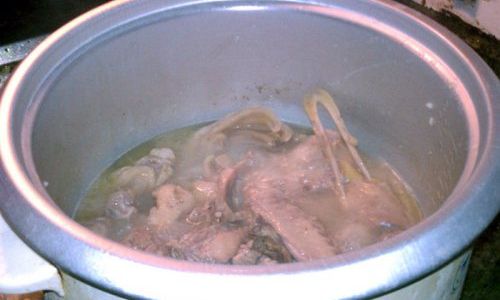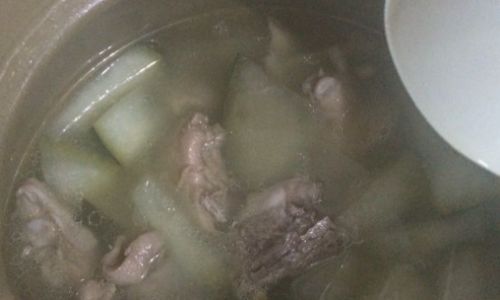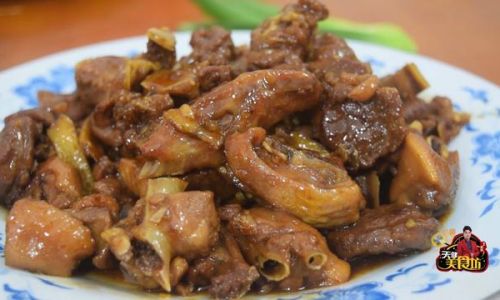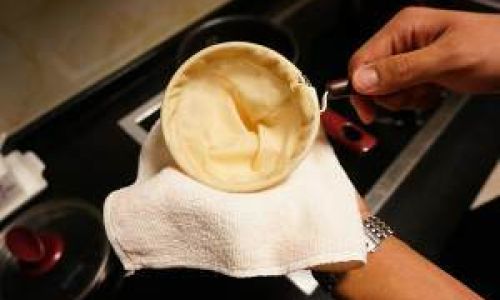Introduction
Duck dishes are renowned worldwide for their rich flavors and succulent textures. Among various cooking methods, stewing stands out as a technique that not only enhances the taste of duck meat but also preserves its nutritional value. Stewing involves slow cooking duck in a covered pot with a small amount of liquid, allowing the meat to become tender and flavorful while retaining its juices. This article will guide you through the process of stewing ducks to create a meal that is both delicious and nutritious.
Choosing the Right Duck
The first step in stewing a delicious and nutritious duck dish is selecting the right type of duck. There are several varieties available, each with its unique characteristics. For stewing, domestic ducks such as Pekin ducks or Muscovy ducks are ideal. Pekin ducks are known for their larger size and tender meat, making them perfect for slow cooking. Muscovy ducks, on the other hand, have darker meat that is richer in flavor and nutrients.
When choosing a duck, look for one with firm, plump breasts and a clean, fresh smell. Avoid ducks with slimy skin or an unpleasant odor, as these may indicate spoilage. Additionally, consider the duck’s age, as younger ducks tend to have more tender meat than older ones.
Preparing the Duck
Once you have selected your duck, it’s time to prepare it for stewing. Begin by rinsing the duck thoroughly under cold running water to remove any dirt or impurities. Pat the duck dry with paper towels to ensure that it cooks evenly.
Next, trim any excess fat from the duck, especially around the neck and cavity. While some fat is necessary for flavor, too much can make the stew greasy. Season the duck generously with salt, pepper, and any other spices or herbs you prefer. Common choices include garlic, thyme, rosemary, and bay leaves.

Marinating the Duck (Optional)
For an extra layer of flavor, consider marinating the duck before stewing. Create a marinade using ingredients like olive oil, soy sauce, honey, lemon juice, and your favorite spices. Place the duck in a large bowl or resealable plastic bag, pour the marinade over it, and refrigerate for at least 2 hours, preferably overnight. Marinating allows the flavors to penetrate the meat, making the final dish more flavorful.
Selecting the Cooking Liquid
The cooking liquid is crucial in stewing ducks, as it not only flavors the meat but also contributes to its nutritional value. Common choices include chicken or duck broth, red wine, beer, or a combination of these. For a more nutritious stew, consider adding vegetables such as carrots, celery, onions, and tomatoes. These vegetables will not only add flavor but also provide essential vitamins and minerals.
Stewing the Duck
Now it’s time to start stewing. Preheat your oven to a low temperature, typically around 300°F (150°C). Place the seasoned duck in a heavy-bottomed pot or Dutch oven. Pour in enough cooking liquid to cover about half of the duck. Bring the liquid to a simmer on the stovetop, then cover the pot and transfer it to the oven.
Allow the duck to stew for several hours, depending on its size and the desired level of tenderness. A general guideline is to stew the duck for about 3 to 4 hours for a tender and flavorful result. During this time, the duck’s meat will become tender and infused with the flavors of the cooking liquid and vegetables.

Checking and Adjusting Seasoning
After the duck has stewed for the required time, carefully remove it from the oven. Use a meat thermometer to check the internal temperature of the duck, ensuring it reaches 165°F (75°C) for safety. If the duck is not yet tender, return it to the oven for additional cooking time.
Once the duck is cooked, taste the stewing liquid and adjust the seasoning as needed. Add more salt, pepper, or herbs to enhance the flavor. If the stew is too thick, you can add a little more cooking liquid or broth to reach your desired consistency.
Serving the Stew
When the duck is tender and the stew is flavorful, it’s ready to serve. Remove the duck from the pot and let it rest for a few minutes before carving. Serve the duck in bowls, ladling the stewing liquid and vegetables over the meat. Accompany the dish with sides such as mashed potatoes, roasted vegetables, or crusty bread to soak up the delicious juices.
Nutritional Benefits of Stewed Duck
Stewing ducks not only makes them delicious but also preserves their nutritional value. Duck meat is a good source of protein, essential for muscle repair and growth. It also contains healthy fats, such as omega-3 fatty acids, which are beneficial for heart health. The vegetables added to the stew provide additional nutrients, including vitamins, minerals, and fiber.

Conclusion
In conclusion, stewing ducks is a simple yet effective way to create a meal that is both delicious and nutritious. By selecting the right duck, preparing it properly, and using a flavorful cooking liquid, you can enjoy a tender, succulent dish that is packed with essential nutrients. Whether you’re serving it for a family dinner or a special occasion, stewed ducks are sure to impress with their rich flavors and satisfying textures. So, why wait? Gather your ingredients and start stewing your own delicious and nutritious duck dish today!




0 comments